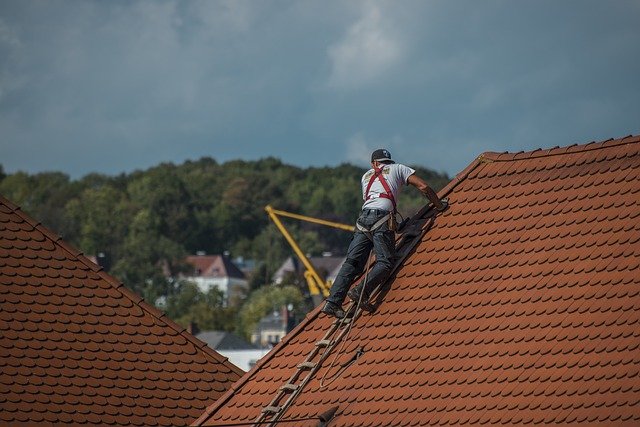Unlock Essential Roof Repair Grants: Financial Aid for Homeowners in Need of Critical Repairs in 2026
Homeowners facing critical roof damage often struggle with the financial burden of necessary repairs. Fortunately, various grant programs and financial assistance options exist to help eligible individuals secure funding for essential roof repairs. Understanding these programs, their eligibility requirements, and application processes can make the difference between a safe, secure home and ongoing structural deterioration that threatens property value and family safety.

Roof damage can create serious safety hazards and lead to extensive property damage if left unaddressed. For many homeowners, the cost of repairs presents a significant financial challenge. Government agencies, nonprofit organizations, and community programs offer grant funding to help eligible homeowners maintain safe, weatherproof housing. These programs prioritize low-income families, elderly homeowners, veterans, and individuals with disabilities who lack the financial resources to complete necessary repairs.
What Are Roof Repair Grants?
Roof repair grants are financial assistance programs that provide funding to homeowners who cannot afford critical roof repairs or replacement. Unlike loans, grants do not require repayment, making them an ideal solution for individuals facing financial hardship. These programs are administered by federal agencies, state and local governments, nonprofit organizations, and community development groups. Grant amounts vary based on the program, the extent of damage, and the applicant’s financial situation. Some programs cover partial costs, while others may fund complete roof replacement for qualifying homeowners. The primary goal is to ensure safe, habitable housing conditions and prevent further property deterioration.
Types of Roof Repair Assistance
Several types of assistance programs exist to help homeowners with roof repairs. Federal programs like the U.S. Department of Agriculture Rural Development Housing Repair Grants serve rural homeowners aged 62 and older with very low incomes. The Department of Housing and Urban Development offers Community Development Block Grants that local governments can allocate for housing rehabilitation, including roof repairs. State-level programs vary by location but often provide targeted assistance to vulnerable populations. Nonprofit organizations such as Habitat for Humanity, Rebuilding Together, and local faith-based groups operate repair programs in many communities. Veterans may qualify for specialized assistance through VA programs or veteran-focused nonprofits. Additionally, some utility companies and weatherization programs offer roof repair assistance as part of energy efficiency initiatives, particularly when roof damage affects home heating and cooling efficiency.
Eligibility for Roof Repair Funding Programs
Eligibility requirements differ across programs but generally include income limits, property ownership, and demonstrated need. Most programs target low to very-low-income households, typically defined as earning below 50-80% of the area median income. Applicants must usually own and occupy the property as their primary residence. Age requirements apply to some programs, with preference given to elderly homeowners, typically those 60 or older. Disability status, veteran status, and family composition may also influence eligibility. The roof damage must pose a health or safety hazard, with priority given to structural issues, leaks causing interior damage, or conditions that threaten habitability. Some programs require that applicants have exhausted other funding options or lack access to affordable credit. Documentation requirements typically include proof of income, property ownership, identification, and professional assessments of the roof damage and repair costs.
Cost Estimation and Program Comparison
Understanding typical grant amounts and program structures helps homeowners identify appropriate assistance options. The following comparison provides general guidance on major program types:
| Program Type | Administering Organization | Typical Grant Amount | Key Features |
|---|---|---|---|
| USDA Rural Housing Repair | U.S. Department of Agriculture | Up to $7,500 | Rural areas, age 62+, very low income |
| CDBG Housing Rehabilitation | Local Government/HUD | $5,000-$25,000 | Varies by locality, income-based |
| Weatherization Assistance | State Energy Offices | $3,000-$8,000 | Energy efficiency focus, income limits |
| Nonprofit Repair Programs | Habitat, Rebuilding Together | $2,000-$15,000 | Local availability varies, volunteer labor |
| State Emergency Repair | State Housing Agencies | $5,000-$20,000 | Emergency situations, state-specific |
| Veterans Programs | VA and Veteran Nonprofits | $3,000-$10,000 | Military service required, income-based |
Prices, rates, or cost estimates mentioned in this article are based on the latest available information but may change over time. Independent research is advised before making financial decisions.
How to Apply for House Repair Grants
The application process varies by program but follows general steps. Start by researching available programs in your area through local government housing departments, Area Agencies on Aging, community action agencies, and nonprofit organizations. Contact program administrators to confirm eligibility requirements and current funding availability, as many programs have limited funds and waiting lists. Gather required documentation, including recent tax returns, pay stubs, property deeds, utility bills, and identification documents. Obtain professional roof inspections and repair estimates from licensed contractors, as most programs require detailed assessments and cost projections. Complete application forms thoroughly and accurately, providing all requested information and supporting documentation. Some programs require in-person interviews or home visits as part of the evaluation process. After submission, follow up regularly on application status and respond promptly to requests for additional information. Processing times range from several weeks to several months depending on the program and funding cycles. If denied, ask about appeal processes or alternative programs. Consider applying to multiple programs simultaneously to increase chances of securing assistance, but disclose all pending applications as required.
Securing financial assistance for critical roof repairs requires patience, thorough research, and careful attention to application requirements. Homeowners should explore all available options, from federal and state programs to local nonprofit initiatives. Early action prevents minor damage from becoming major structural problems, and grant programs exist specifically to help those who need assistance most. By understanding available resources and following proper application procedures, eligible homeowners can access the funding needed to maintain safe, secure housing for themselves and their families.




